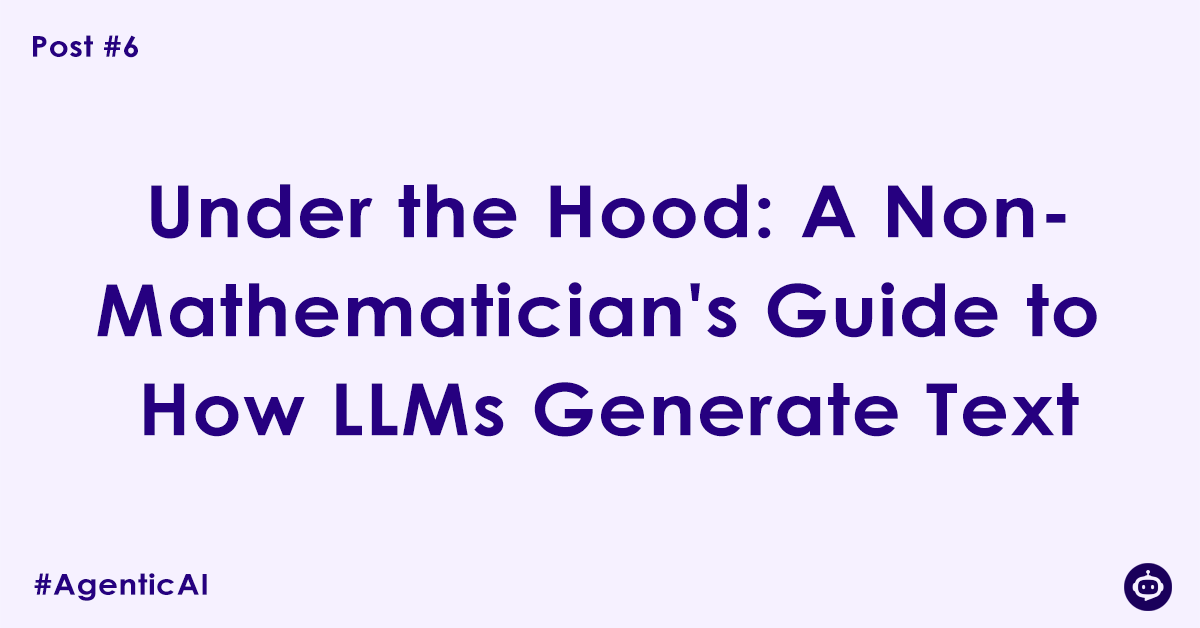When you type a prompt into an AI chat and receive a coherent, well-written paragraph in response, it can feel like pure magic. How does a machine, which only understands numbers, process the nuance of human language and weave together new sentences?
While the underlying mathematics is incredibly complex, the core concepts are surprisingly intuitive. You don’t need a Ph.D. in linear algebra to grasp the genius behind it. Let’s peel back the curtain on how Large Language Models (LLMs) generate text by exploring three key ideas: tokens, embeddings, and the transformer architecture.
Step 1: Breaking Language into LEGOs – Tokens
Computers don’t read words or sentences. They work with numbers. The very first step in language processing is to break our text down into manageable, numerical pieces. These pieces are called tokens.
A token is often a word, but it can also be a part of a word or a piece of punctuation.
Consider the sentence: The cat sat on the mat.
An LLM’s tokenizer would likely split this into: ["The", " cat", " sat", " on", " the", " mat", "."]
For a more complex word like “unbelievably,” the tokenizer might break it down into smaller, common parts like ["un", "believab", "ly"]. This is a clever trick that allows the model to understand and construct words it may have never seen before, simply by knowing its constituent parts.
The Analogy: Think of language as a massive, intricate castle. You can’t analyze the whole castle at once. Instead, you break it down into its individual LEGO bricks. Tokens are the LEGO bricks of language. It’s the first, essential step to make language countable and structured for a machine.
Step 2: Giving Words Meaning – Embeddings
Once we have our tokens, we need to represent their meaning numerically. A simple ID number for each token isn’t enough; “happy” and “joyful” should have similar numbers, while “happy” and “asphalt” should have very different ones.
This is where embeddings come in. An embedding is a list of numbers (a vector) that represents a token’s location in a high-dimensional “meaning map.” Tokens with similar meanings are placed close together on this map.
The Analogy: Imagine a giant library where every book has a specific coordinate. Books on “18th-century French history” are all in one corner, while books on “quantum physics” are in another. You can navigate this library based on concepts. Embeddings create a similar conceptual map for words.
This map is so powerful that it captures complex relationships. The most famous example is the equation:
vector('King') - vector('Man') + vector('Woman') ≈ vector('Queen')
By doing simple math with these lists of numbers, the model can navigate the “meaning map” and understand relationships like gender, tense, and even abstract concepts. This is how the model moves beyond just recognizing words to understanding their context and nuance.
Step 3: The Engine of Context – The Transformer Architecture
Now we have our tokens and their meaningful numerical representations (embeddings). But the meaning of a sentence depends on the order and relationship between words. “The cat chased the dog” is very different from “The dog chased the cat.”
This is the problem solved by the transformer architecture, and its secret weapon is a mechanism called attention.
The Analogy: Imagine you’re in a room with a team of expert linguists trying to understand a complex sentence. To understand the word “it” in the sentence “The robot picked up the heavy box because it was strong,” a linguist would instinctively “pay attention” to the word “robot,” not “box.”
The attention mechanism does exactly this. For every single token it processes, it scans the entire sentence and calculates “attention scores” to determine which other tokens are most relevant to understanding its meaning in this specific context. It creates a weighted understanding, focusing its processing power on the relationships that matter most.
The LLM does this through many layers, constantly refining its contextual understanding. In early layers, it might learn grammatical structure. In later layers, it builds up a more abstract, nuanced understanding of the entire passage.
Putting It All Together: Generating the Next Word
So, how does this lead to new text? It’s a highly sophisticated prediction process, one token at a time.
- Input: Your prompt is tokenized and converted into embeddings.
- Processing: These embeddings are fed through the many layers of the transformer, which uses the attention mechanism to build a deep contextual understanding of what you’ve asked.
- Prediction: The model’s final output is a massive probability score for every single token in its vocabulary. It’s essentially asking, “Based on everything I’ve just read, what is the most likely next token?”
- Selection: The model chooses a token from the list of high-probability options. (It doesn’t always pick the absolute #1, which is how it introduces variability and creativity).
- Repeat: This newly chosen token is now added to the input sequence, and the entire process repeats to generate the next token, and the next, and the next, until the full response is complete.
So, while it feels like a single act of creative writing, the LLM is actually playing a lightning-fast, highly-informed game of “what comes next,” building its response one LEGO brick at a time. It’s not magic—it’s a beautiful, layered process of turning language into numbers, understanding their relationships, and then turning them back into language again.
Author

Experienced Cloud & DevOps Engineer with hands-on experience in AWS, GCP, Terraform, Ansible, ELK, Docker, Git, GitLab, Python, PowerShell, Shell, and theoretical knowledge on Azure, Kubernetes & Jenkins. In my free time, I write blogs on ckdbtech.com
